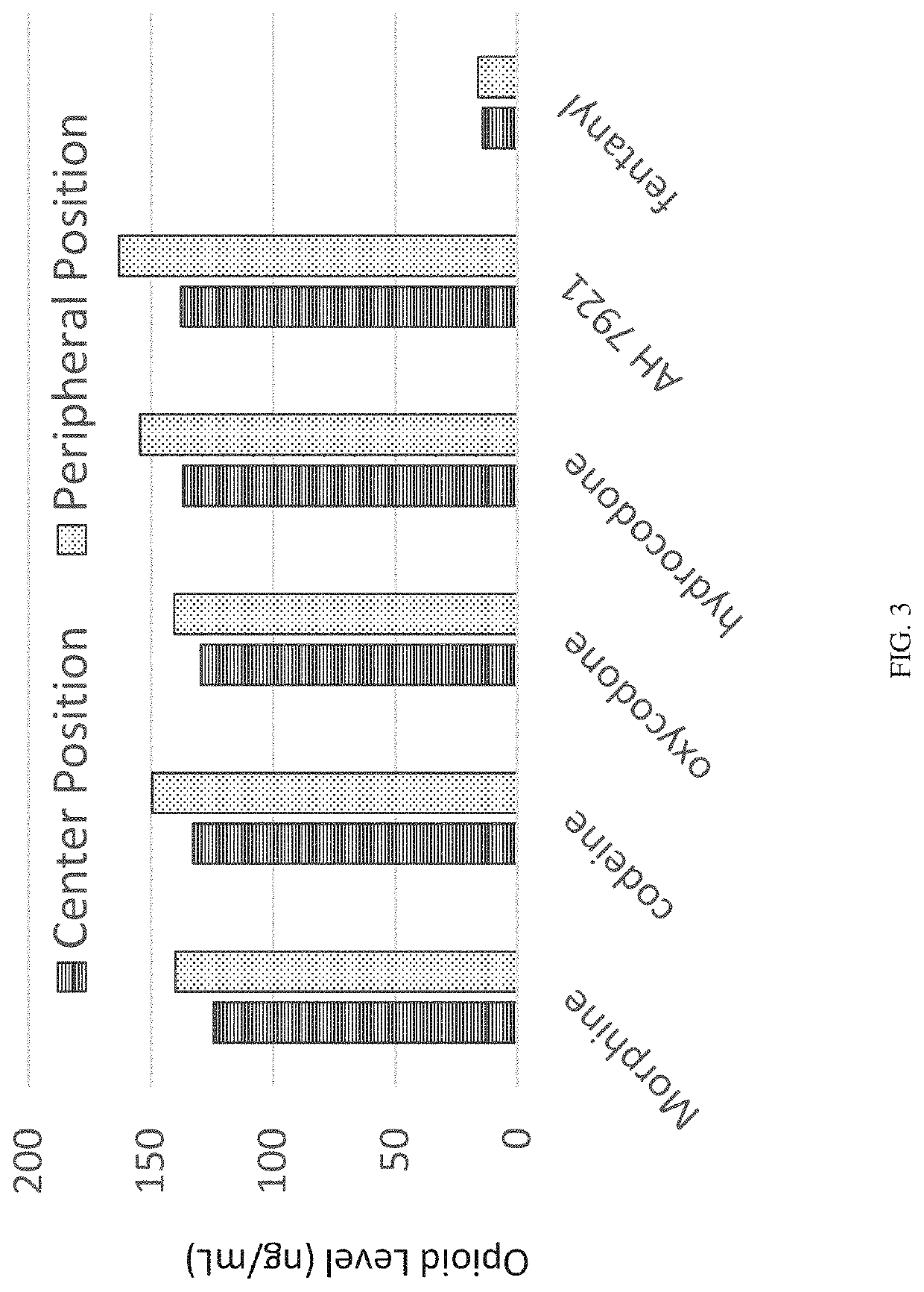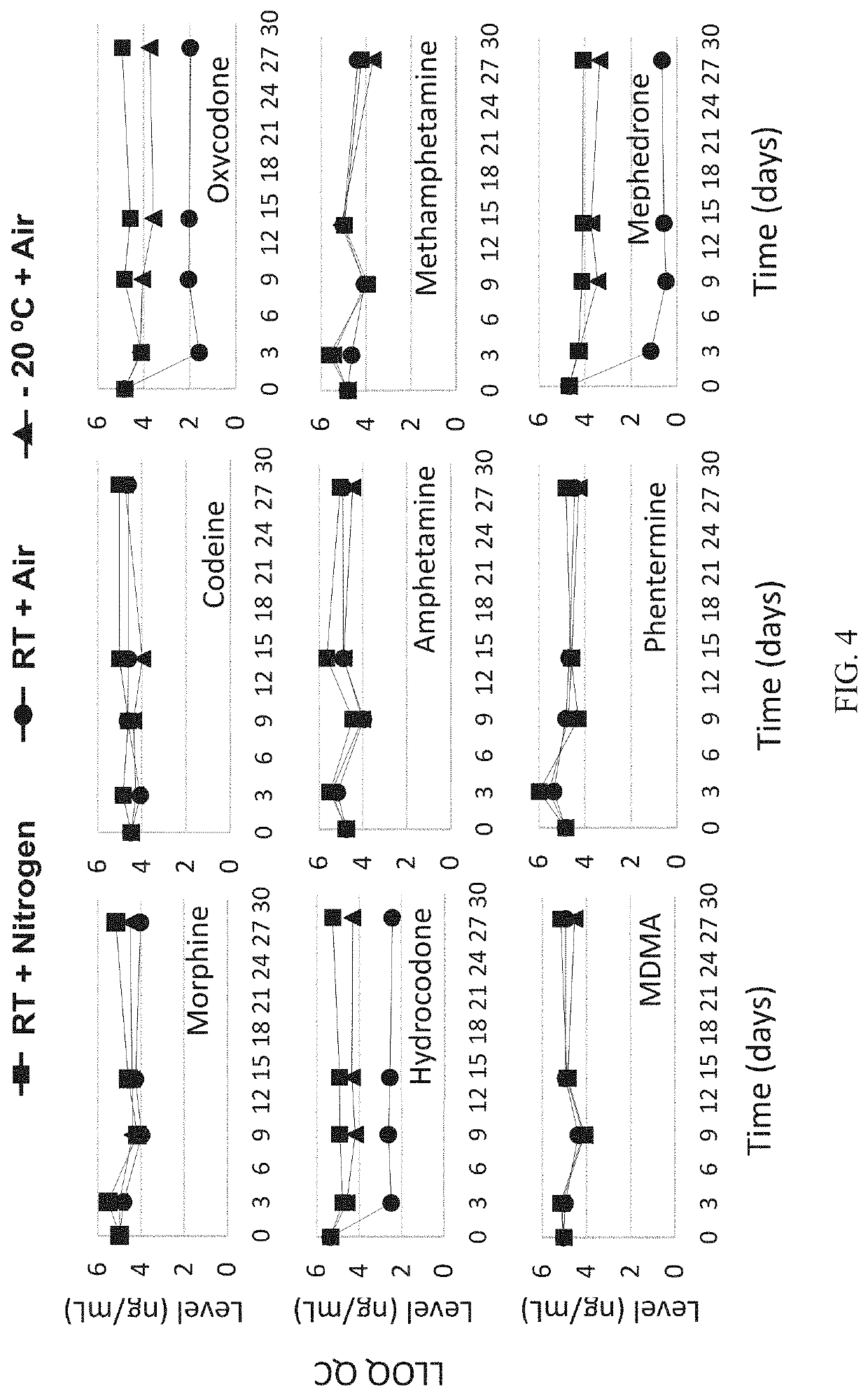Multilayer device for separating blood components and uses thereof
a multi-layer device and blood component technology, applied in the field of fluid sample component separation, can solve the problems of inaccuracy bias at the low and high ends of the hematocrit, many challenges in the product and testing method, and limitation of the processing of the collected sampl
- Summary
- Abstract
- Description
- Claims
- Application Information
AI Technical Summary
Benefits of technology
Problems solved by technology
Method used
Image
Examples
example 1
Construction of Book-Type Multilayer Device
[0150]To prepare the filtration membrane unit, for example, RBC filter disks, a iPOCDX™ membrane filter sheet was punched using HARRIS Uni-Core™ punch of 5 mm diameter (Amazon, USA). A bottom support layer comprising cutout disks of 5 mm diameter, which used the card stock material similar to the top cover or top support layer, were prepared using an OSBORNE arch punch (Amazon, USA). As shown in FIG. 1, after preparing each layer of the materials, the card was assembled by first placing a polyester hydrophobic membrane layer (4) on the inner side of the underside of a top cover card stock (2) followed by punching equally spaced four holes through the upper card stock or top cover and through the polyester hydrophobic membrane layer (4). The bottom elevated or raised supports (6) were made of two round disks of the cover support card stock material affixed on the inner surface of the bottom cover card stock (7) using an adhesive, such as for...
example 2
Automated Flow-Through Elution Coupled with on-Line SPE-LC-MS / MS Bioanalysis of Opioids and Stimulants in Blood
[0153]In order to design, develop, and validate a hematocrit-capable multilayer device that can produce plasma without the need for centrifugation that is suitable for automated on-line liquid chromatography with tandem mass spectrometry detection (LC / MS / MS) analysis, a multilayer device was developed to prepare dried plasma spot samples from whole blood microsampling. Extraction of the resulting dried plasma spot was accomplished by direct elution followed by an on-line solid phase extraction (SPE) and LC / MS / MS determination of analytes of interest, in this case, opioids and stimulants. Four opioids and five stimulants having varying physiochemical properties were selected to test in this analysis.
[0154]A series of standard working solutions were prepared by dilution of primary stock solutions with 3:7 methanol / water (v / v). Calibration standards were also prepared at 5 ng / ...
example 3
Test Compounds for Testing Multilayer Device
[0187]The multilayer device of the invention was tested using a known hypertension and ADHD drug, guanfacine, with its [13C, 15N3] internal standard. Guanfacine (C9H9Cl2N3O) has a monoisotopic mass of 245.0123 Da, while the internal standard [13C, 15N3]-guanfacine (13CC8H9Cl215N3O) has a monoisotopic mass of 249.0067 Da. These compounds were tested using a whole blood sample with a Blood:Plasma binding ratio (Ke / p) of 1.5 and analyzed using LC-MS / MS bioanalysis following the protocol described here.
PUM
 Login to View More
Login to View More Abstract
Description
Claims
Application Information
 Login to View More
Login to View More - R&D
- Intellectual Property
- Life Sciences
- Materials
- Tech Scout
- Unparalleled Data Quality
- Higher Quality Content
- 60% Fewer Hallucinations
Browse by: Latest US Patents, China's latest patents, Technical Efficacy Thesaurus, Application Domain, Technology Topic, Popular Technical Reports.
© 2025 PatSnap. All rights reserved.Legal|Privacy policy|Modern Slavery Act Transparency Statement|Sitemap|About US| Contact US: help@patsnap.com



